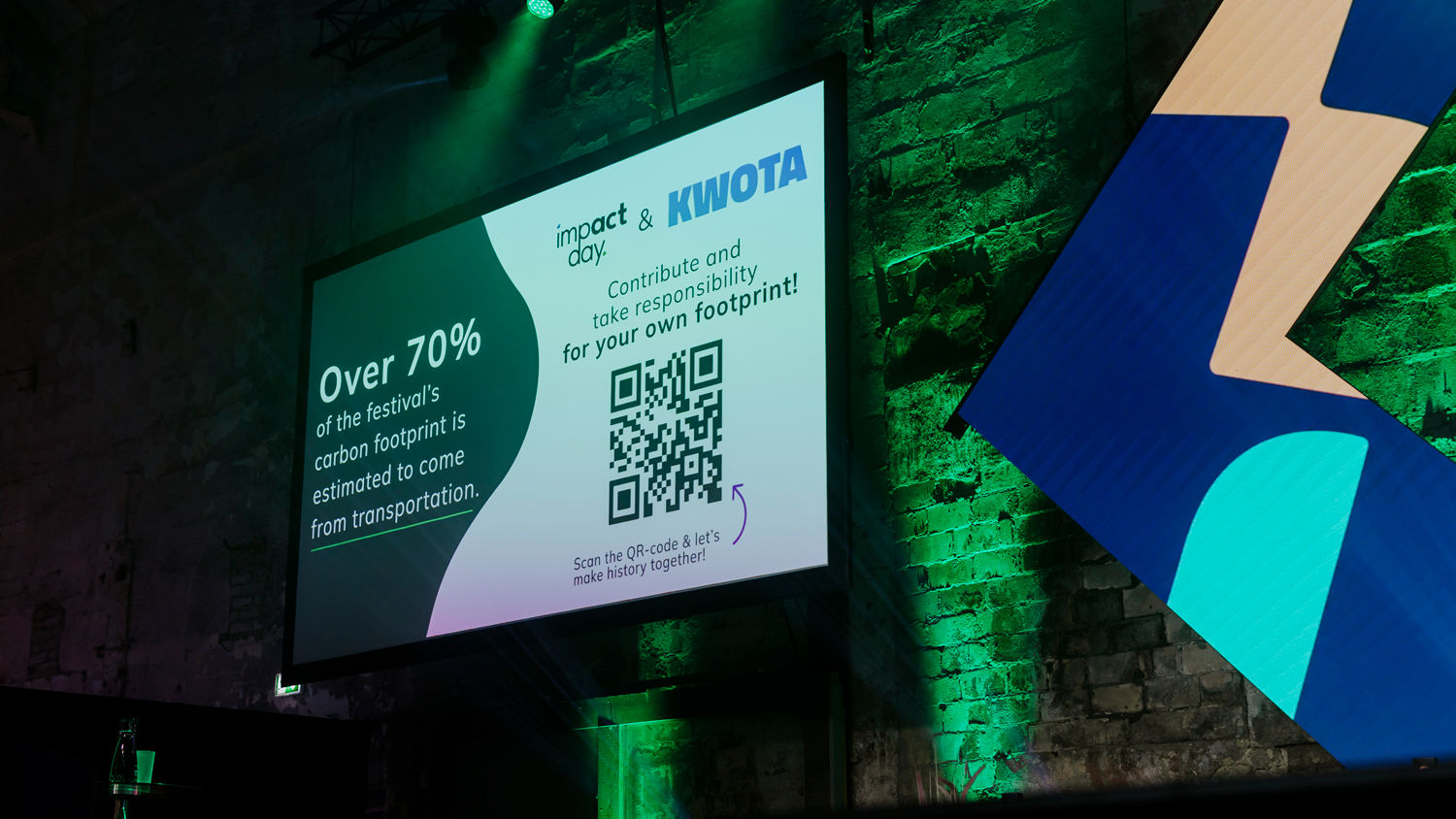Impact Day 2024, the largest sustainability and impact festival in the Baltics and Nordics, recently concluded with great success. Held in Tallinn, Estonia, from October 10 to 12, the event gathered thought leaders, innovators, and sustainability advocates to address the pressing environmental challenges of today. To lead by example, the organizers took significant steps to minimize the event’s carbon footprint, starting with a crucial first step—calculating their CO2 emissions.
Planet Positive, a climate-neutral business agency, worked with the organizers to track and analyze the emissions data. Soon we’ll publish the annual Impact Report where you can see detailed summary of the impact accomplished (see the 2023 report here).
If you’re planning an event and are unsure where to start in calculating its emissions, here are …
5 Easy Steps to Help You Begin Calculating Your Event’s Carbon Footprint:
- Create an inventory checklist:
Start by creating an inventory of all the resources and activities involved in your event. This includes everything from energy consumption at the venue to waste generation and materials usage. Be sure to gather information from attendees about their travel arrangements, as transportation often contributes significantly to the event’s overall carbon footprint. - Inform suppliers:
Engage your suppliers early on by informing them of the importance of providing CO2 data for the goods and services they supply. Transparency is key here—encourage collaboration and ensure all stakeholders are committed to tracking and minimizing emissions across the supply chain. - Calculate emission estimates:
Before your event, carry out a preliminary assessment to estimate the potential emissions. This will give you an idea of the event’s environmental impact and help guide decisions around reducing emissions in key areas, such as transportation, energy usage, and waste management. - Compare to actual emission data:
Once your event is over, collect actual emissions data and compare it with your initial estimates. This step is crucial for identifying areas where you may have over- or underestimated your emissions. By doing so, you can refine your calculations and strategies for future events. - Consult experts:
While it’s possible to start calculating your emissions on your own, consulting experts can make a world of difference. Professionals in this field possess specialized knowledge, access to industry-specific data, and expertise in interpreting complex metrics. They can provide tailored advice, identify hidden sources of emissions, and recommend effective strategies for reduction.
How Event Emission Calculations Help Minimize Environmental Impact
The process of calculating event emissions not only provides a snapshot of your carbon footprint but also plays a crucial role in uncovering areas where improvements can be made. Here’s how GHG event calculations can help identify potential minimization strategies:
- Detailed Breakdown of Emissions Sources:
Event emission calculations provide organizers with a breakdown of emissions from various sources, such as transportation, energy use, waste, and materials. By analyzing this data, organizers can prioritize areas where emissions are particularly high and focus their efforts on reducing these. - Data-Driven Decision Making:
Having accurate emissions data empowers event organizers to make informed, data-driven decisions. For instance, if transportation is identified as a major source of emissions, organizers can explore sustainable options like promoting carpooling, providing incentives for attendees to use public transportation, or offering virtual attendance options. - Setting and Tracking Reduction Targets:
Emissions calculations allow organizers to set clear reduction targets and track progress towards these goals. By measuring and evaluating emissions over multiple events, it’s possible to implement iterative improvements and continually enhance sustainability performance. - Benchmarking for Best Practices:
By comparing emissions data with industry benchmarks or similar events, organizers can gain valuable insights into best practices. This benchmarking helps set ambitious yet achievable emission reduction targets and drives innovation in sustainable event planning.
If you’re organizing an event, whether large or small, calculating its emissions is a crucial step towards minimizing your environmental impact. By following the steps outlined above, you can start on the path to greener event planning.




